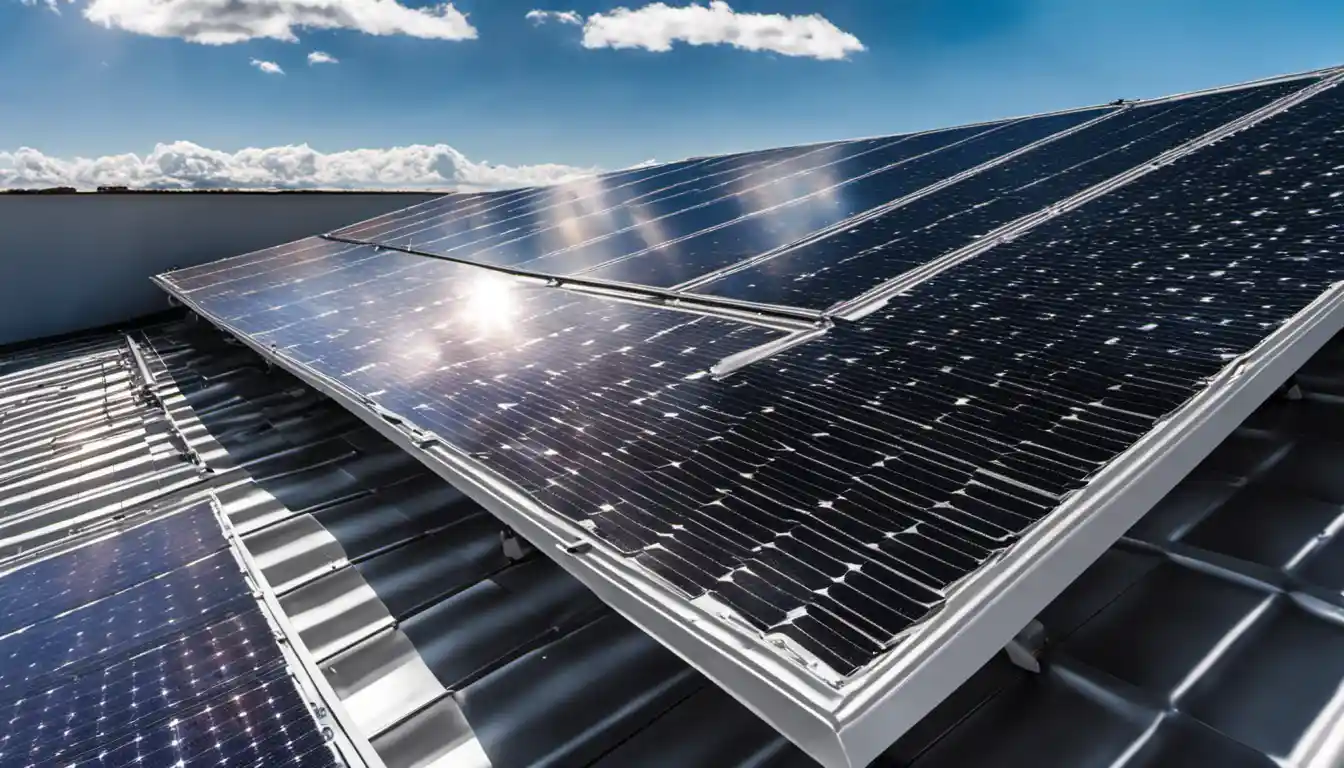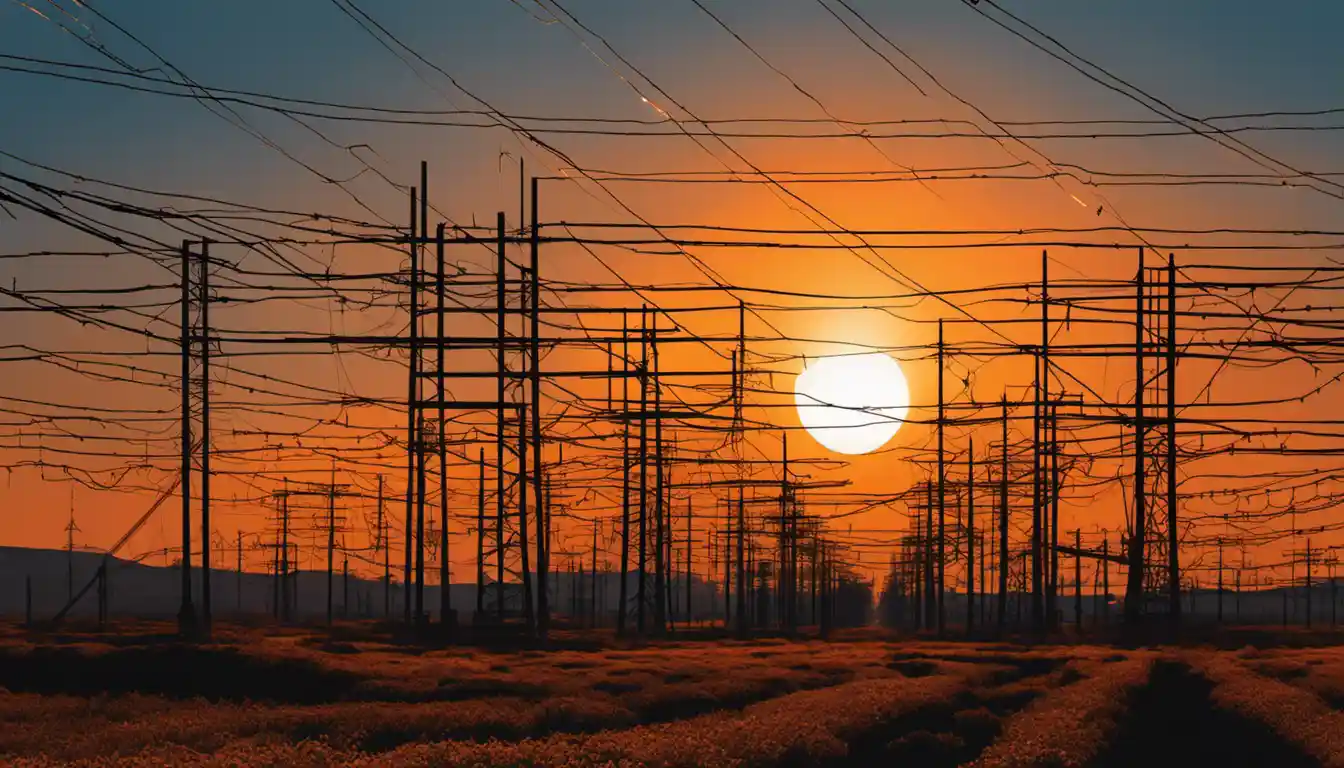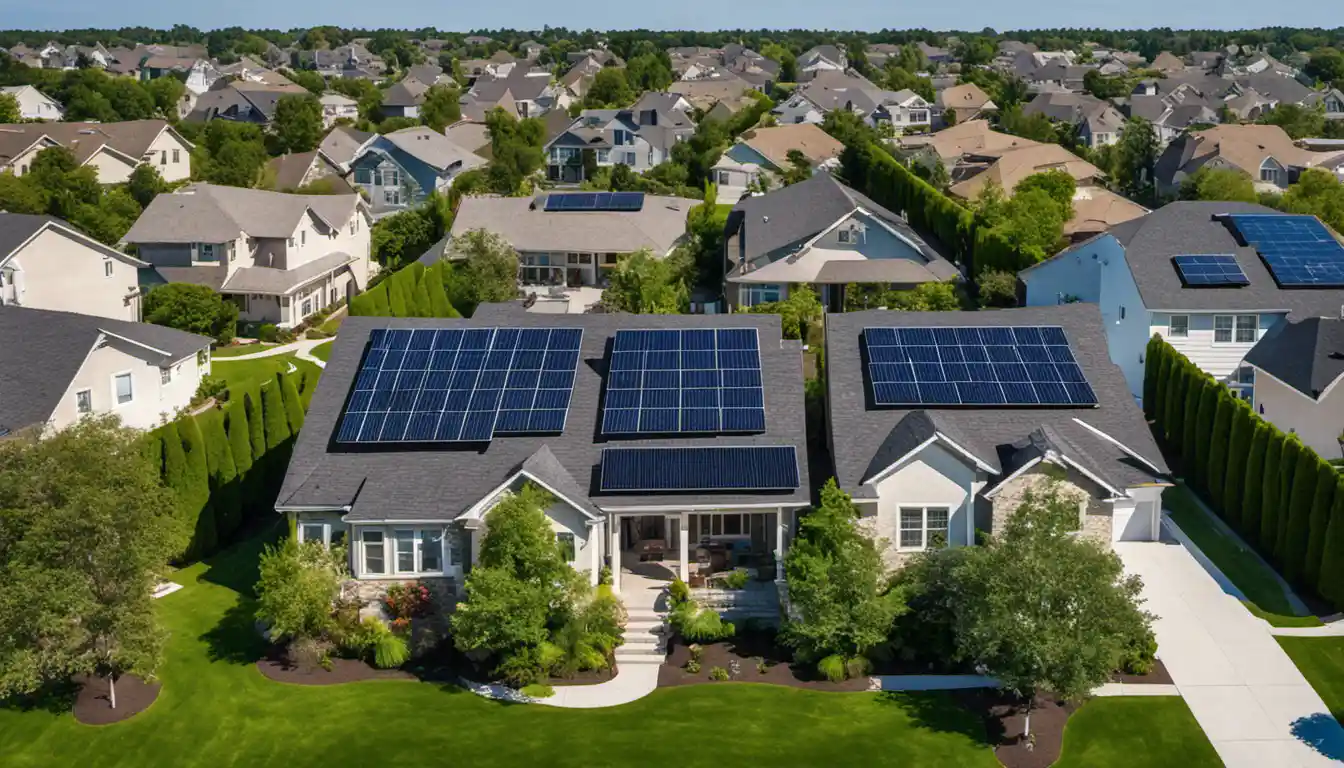Understanding the Grid-Tied Solar Systems
A grid-tied solar system primarily includes solar panels, a grid-tie inverter, and a power meter. The solar panels generate DC electricity which is converted into AC electricity by the inverter. This AC electricity can then be used in your house or fed back to the electric grid via the power meter.
What Are Grid-Tied Solar Systems?
Grid-tied solar systems are solar energy systems that are connected directly to your local power grid, allowing you to draw power whenever needed. Have you ever noticed those sleek, shiny grids on the rooftops around your neighborhood? Those are grid-tied solar panels. Envision the sun casting its golden rays towards the earth. These panels absorb sunlight, converting it into electricity. That’s the magic of solar power! Discover more about What is a Grid-Tied Solar System as we dive deeper into the article.
How Does Solar Power Work on the Grid?
Grid-tied solar power systems are more than just having solar panels on your roof. Electricity generated by the solar panels is converted from DC (direct current) to AC (alternating current) to match your home electricity system and the grid. When your electric usage is low during daylight, your solar panels feed the excess electricity back into the grid. At night or on cloudy days when the panels can’t produce enough electricity, the grid supplies you with power.
Similarities and Differences Between Grid-Tied and Other Solar Systems
Solar systems come in many flavours, but the most common one is the Grid-Tied system. Off-Grid and Hybrid systems may sound attractive with their promise of energy independency, but their high costs and complexity often push them out of consideration. The major benefit of Grid-Tied systems is their simplicity and cost-effectiveness.
Cost of a Grid-Tied Solar System
The cost of a grid-tied solar system can vary depending on where you live, the size of your home, and how much energy you consume. However, with recent advancements in technology and financial incentives, solar has become an affordable option. Remember, investment in a solar power system is not an expense; it’s a move towards a sustainable future!
Components of Grid-Tied Solar Systems
Understanding the various “grid tied solar system components” helps you make educated decisions.
Understanding Solar Panels

The heart and soul of any solar system lies in the solar panels. These panels use semiconductors, usually made of silicon, to absorb sunlight and produce electricity. There are several types of solar panels with varying efficiencies and costs, but the most common types are monocrystalline and polycrystalline panels.
The Role of Grid Tie Inverters
Grid tie inverters are the bridge connecting your solar panels to your house and the grid. They convert the DC electricity generated by your panels into AC electricity that can be used by your home or sent back to the grid.
Exploring the Net Meter (Power Meter) Component
The net meter, or power meter, is an integral part of a “grid-tied solar pv system”. It measures the energy you use and the surplus energy your system sends back to the grid. It spins forward when you’re using power from the grid, and backwards when you’re contributing power – cool, isn’t it?
Importance of Cable and Wiring
Wiring is the nervous system of your solar power setup. Albeit unsung heroes, these cabling and wiring components connect every piece of equipment ensuring a continuous flow of electricity.
Functionality of the Combiner Box
Imagine the combiner box as a meeting point. It is here where the outputs from several solar panels combine and feed into the inverter. This little box plays a critical, yet underrated role in solar systems.
The Use of Racks and Mounts
Racks and mounts are essentially the skeleton of your solar power system. They securely hold your solar panels in place and are designed to withstand all types of weather conditions.
Depicting Safety Switches
Safety switches, or disconnect switches, allow parts of the solar system to be isolated for maintenance or in emergencies.
Connection to the Utility Grid

The final step in a grid-tied solar system is the connection to your local utility grid, making the system a part of the wider electrical network.
How Grid-Tied Solar Systems Work
A simple way to understand how grid-tied systems work is to picture a two-way road.
Managing Power Surpluses and Shortfalls
What happens to excess solar power production?
Your solar panels might produce more electricity than you need during long, sunny summer days. Instead of wasting this electricity, it is fed back into the public utility grid, turning your meter backwards.
What happens when the sun goes down?
On the flip side, during the night or on cloudy days, your solar panels may not produce enough electricity. In such cases, you can draw power from the grid. It’s a win-win!
Role of Net Metering in Grid-Tied Solar Systems
Net metering is a billing mechanism that provides credit to homeowners with solar panels who give their excess electricity back to the grid. This way, you only pay for the electricity you use beyond what your solar panels generate.
Understanding Grid Outages

Despite the numerous benefits, one hiccup with grid-tied solar systems is that they go down during grid-blackouts. They’re designed this way to ensure the safety of the workers fixing the grid from electricity being fed back into it.
Power Production Across Seasons
Solar power is influenced by the seasons, varying as the length of day, sun intensity, and weather change.
Spring and Fall Power Production
During these mild-weather seasons, your solar system would typically generate a consistent amount of energy due to the moderate sunlight and cooler temperatures.
Summer Power Generation
In summers, longer days and more intense sun mean your panels are more productive. However, extremely hot temperatures can slightly decrease the panels’ efficiency.
Winter Power Production
In winters, solar panels’ efficiency actually increases despite fewer hours of sunlight. However, accumulated snowfall can block the panels, leading to reduced production.
The Pros and Cons of a Grid-Tied Solar System
While grid-tied solar system provides numerous benefits like energy autonomy and savings on electricity bills, it has its downside including reliance on grid availability and inability to function during power outages.
Grid-Tied Solar Systems: Key Takeaways
Deconstructing the key components of a grid-tied solar PV system brings us closer to a sustainable future. We’ve journeyed through the basics of grid-tied solar system components, learning what happens to excess power and power shortfalls, and how power production varies across seasons. Armed with this information, you are closer to having the power of the sun at your fingertips.



